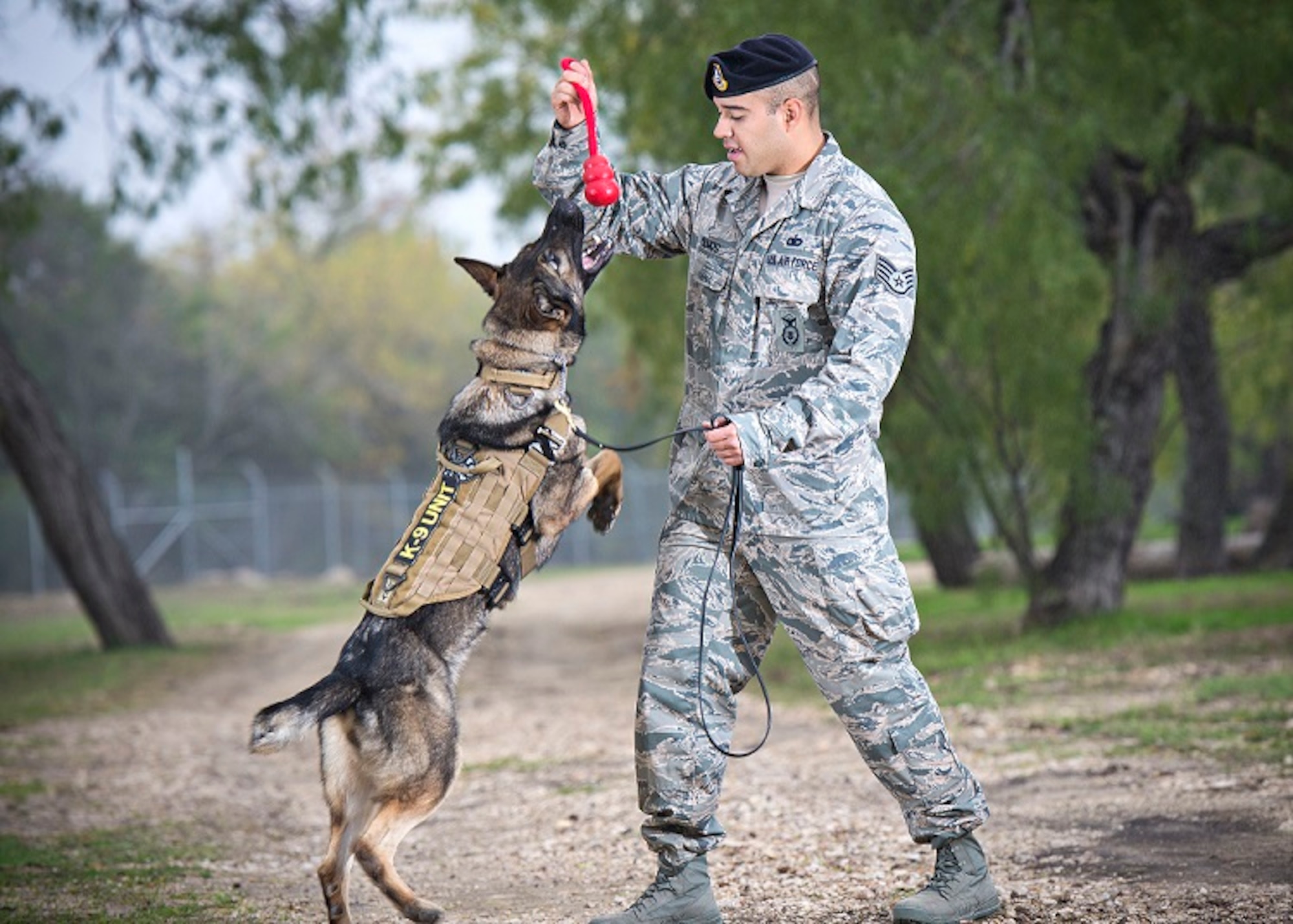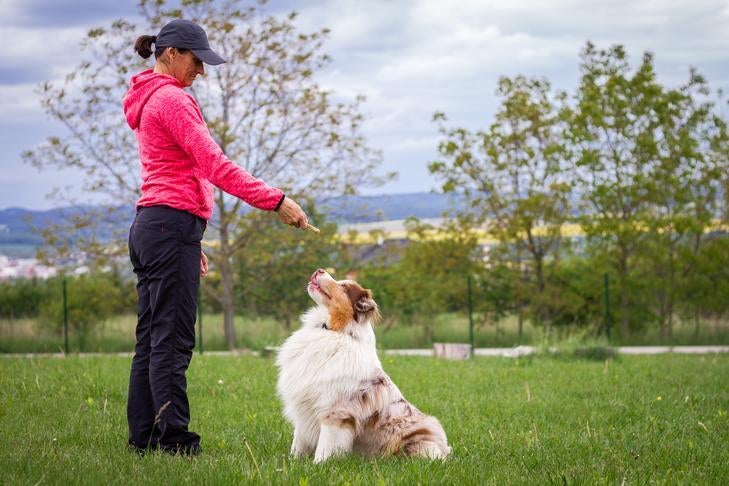Transform Your Pet dog's Actions With Proven Training Techniques
Changing your pet's habits needs a nuanced understanding of their individual qualities and demands, as well as the application of tried and tested training techniques. Uniformity in your training technique not just enhances obedience but likewise promotes a deeper bond of trust and respect between you and your pet.
Comprehending Canine Habits
Recognizing canine behavior is important for efficient training and interaction in between people and their canine companions. Dogs, as social animals, exhibit a series of actions influenced by genetics, setting, and experiences - Dog training. Identifying these actions helps owners customize their training approaches to fulfill the particular needs of their pets
Trick aspects of pet habits include body language, articulations, and social interactions. Additionally, socializing plays an important duty in forming habits; pets that interact favorably with different individuals and other animals are normally more versatile and well-adjusted.
Moreover, acknowledging anxiety signals-- such as panting, evasion, or pacing behaviors-- can protect against rise right into more severe concerns. Proprietors that are in harmony with their pet's behavior can produce a nurturing and secure setting, fostering depend on and enhancing the training process. Eventually, a deep understanding of canine behavior lays the structure for an unified partnership and efficient training end results, ensuring both canines and their proprietors thrive with each other.
Favorable Reinforcement Techniques
Favorable support strategies are commonly recognized as one of the most reliable techniques for training pets, promoting a favorable discovering environment. This method includes gratifying wanted habits with treats, praise, or play, thereby encouraging the pet dog to duplicate those actions. Unlike vindictive approaches, positive reinforcement builds count on and reinforces the bond between the trainer and the pet dog.
To execute favorable reinforcement efficiently, timing is essential. Rewards must be given quickly complying with the wanted behavior to help the pet dog make the connection. Consistency is likewise crucial; using the exact same commands and incentives helps the dog recognize what is expected. Additionally, varying the rewards can maintain the pet engaged - Dog training. Rotating in between treats, toys, and verbal praise can preserve passion and inspiration.
It is essential to note that positive reinforcement is not regarding bribery; instead, it has to do with reinforcing etiquette. With time, as the dog finds out to connect details actions with positive results, the regularity of benefits can be gradually lowered, transitioning to spoken praise or periodic rewards. This method not only motivates obedience but additionally advertises a satisfied and confident pet, making training a much more pleasurable experience for both parties involved.
Attending To Typical Problems
Dealing with common issues throughout pet dog training is necessary for making certain a harmonious and successful relationship in between the pet dog and its owner. Numerous dog owners experience behavior difficulties, such as extreme barking, jumping, and leash drawing. Understanding the origin of these behaviors is critical for reliable training.
To reduce this, offer ample physical exercise, psychological excitement, and possibilities for social interaction with both people and other pets. Training the dog my blog to sit upon welcoming can reroute this behavior favorably.
Chain drawing is another widespread problem, frequently arising from a dog's enthusiasm to explore. Making use of appropriate chain dealing with strategies, integrated with training protocols that motivate loose-leash strolling, can considerably enhance this actions.
Furthermore, concerns like resource protecting or separation anxiety call for tailored strategies. Progressive desensitization and counter-conditioning can be efficient in addressing these difficulties. By acknowledging and proactively taking care of these typical issues, canine owners can promote a much more delightful training experience and strengthen the bond with their canine buddies.
Uniformity in Training

To achieve consistency, it is essential that all participants of the home stick to the exact same training methods. Using the same spoken hints and hand signals ensures that the pet dog receives consistent messages. Furthermore, the timing of corrections and rewards ought to correspond; immediate support increases the likelihood that the pet dog will connect the actions with the result.
Routine technique sessions, coupled with organized routines for feeding, strolling, and playtime, assistance pets anticipate and comprehend their setting, making them more receptive to training. Inevitably, consistency fosters a feeling of protection and count on, equipping pets to find out extra effectively.
Building a Solid Bond
How can fostering a strong bond between a canine and its owner enhance the training experience? A solid relationship built on trust and regard works as the structure for effective training. When a dog feels secure in its link with its proprietor, it is most likely to display positive behaviors and be responsive to finding out. This bond urges the pet dog to engage fully in training sessions, as it views the proprietor as a resource of support and support.
Moreover, a solid bond promotes much better interaction. Pet dogs are proficient at reading human signs, and a trusting relationship enables clearer signals during training. Proprietors who invest time in structure this bond through play, socializing, and positive support produce an atmosphere where canines really feel inspired and eager to find out.
Additionally, a reputable connection can reduce stress and anxiety and behavioral problems, as dogs are less most likely to act out when they feel recognized and taken care of. For that reason, focusing on the development of a solid bond not only improves the training experience but helpful hints likewise adds to a happier and extra well-adjusted canine. Ultimately, the journey of training changes into a collective collaboration, resulting in lasting behavior renovations.
Conclusion

Proprietors that are attuned to their pet dog's habits can produce a risk-free and nurturing setting, promoting count on and enhancing the training procedure. Ultimately, a deep understanding of canine actions lays the structure for a harmonious relationship and reliable training results, guaranteeing both canines and their proprietors grow with each other.
Resolving typical problems during pet training is necessary for making sure a successful and unified partnership between the canine and its proprietor.Uniformity is a foundation of effective pet dog training, as it establishes a clear structure for the pet dog to comprehend behaviors and assumptions.In conclusion, changing a pet dog's behavior via confirmed training techniques requires an understanding of canine actions, the application of favorable support methods, and an emphasis on consistency.